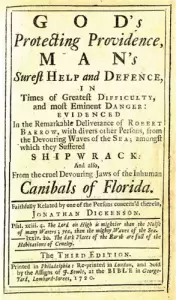Early Tribes

When Europeans arrived in South Florida in the 16th century, they found at least five established tribes, which they brought into the historic period by writing about them. The Mayaimi, probably descendants of the Belle Glade population, lived in the center near Lake Okeechobee. The Tequesta were found to the south in the Everglades, the Jeaga and Jobe north of them along the east coast in a sub-area called East Okeechobee. The dominant Calusa (“fierce people”) in the southwest periodically asserted political dominance over the others. Those in the area that is now Palm Beach County included about 5,000 Tequesta and about 2,000 Jeaga and Jobe. The Ais Indians covered a large area from the St. Lucie River to Cape Canaveral, and at times extended their alliances south as far as the Keys.
During the 1500s, Hernando D’Escalante Fontaneda of Spain was shipwrecked and spent 17 years with the Calusa. Although his memoirs provide only scanty information about the Belle Glade culture, Fontaneda refers to the people who lived around “the Lake of Mayaimi, which is called Mayaimi because it is very large.” (The Miccosukees later named it Okeechobee, which also means “big water.”) The Mayaimi Indians built large mounded villages and, like many others, were fishermen and hunters rather than farmers. Indians who lived inland made great use of terrapins, from saltwater marshes, and other turtles in their diet. Middens (refuse heaps) on the edge of the Everglades contain more turtle carapaces (part of the shells) than any other bones.
Within 250 years of Juan Ponce de León’s exploration of the Florida coastline, the early tribes were gone. Some were killed in warfare or enslaved; most died from European diseases, for which they had no resistance. Much of what we know about them during this Contact Era comes from European ship’s logs, the journal of a shipwrecked Pennsylvania Quaker, and over a century of archaeological efforts.

